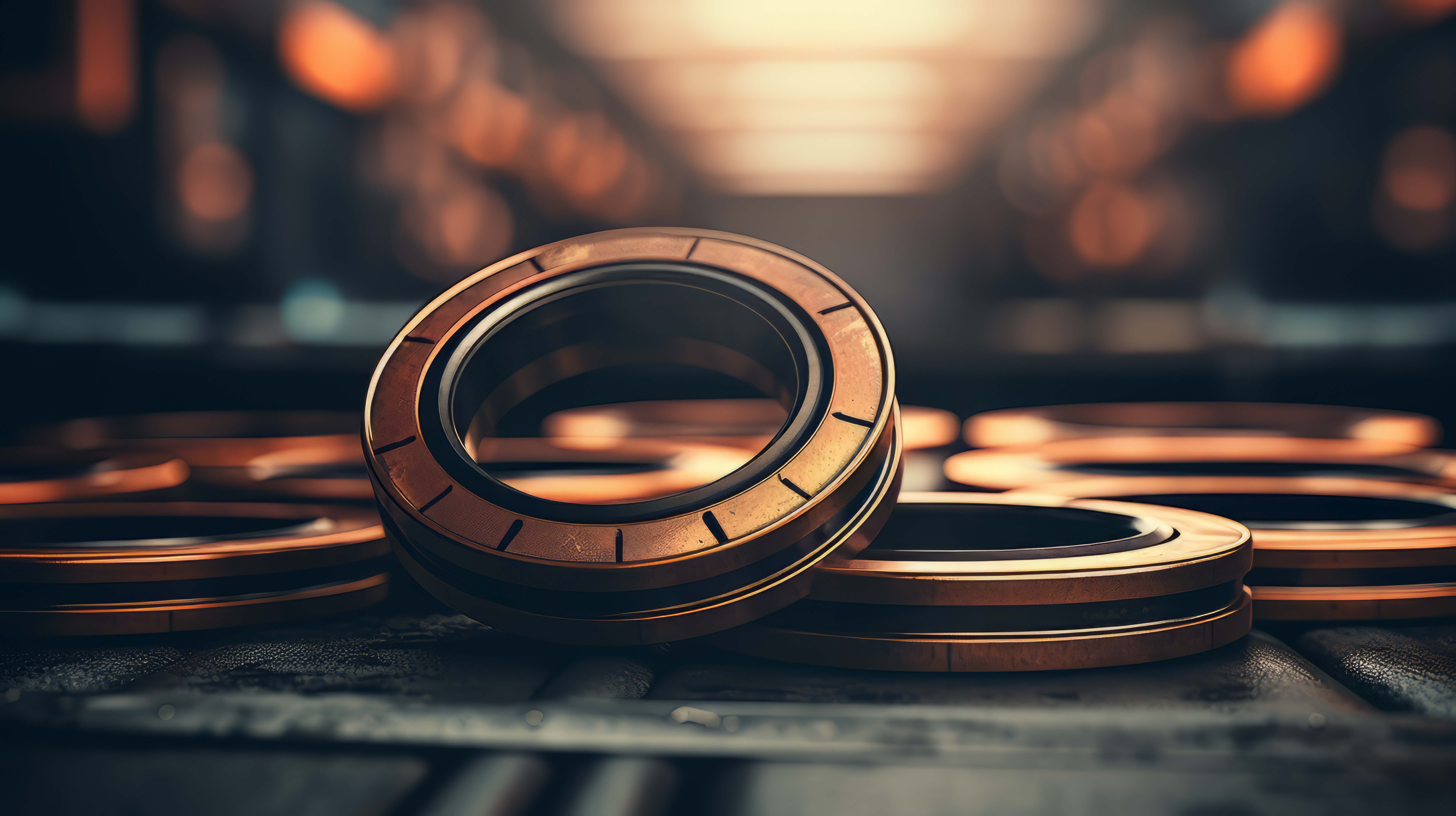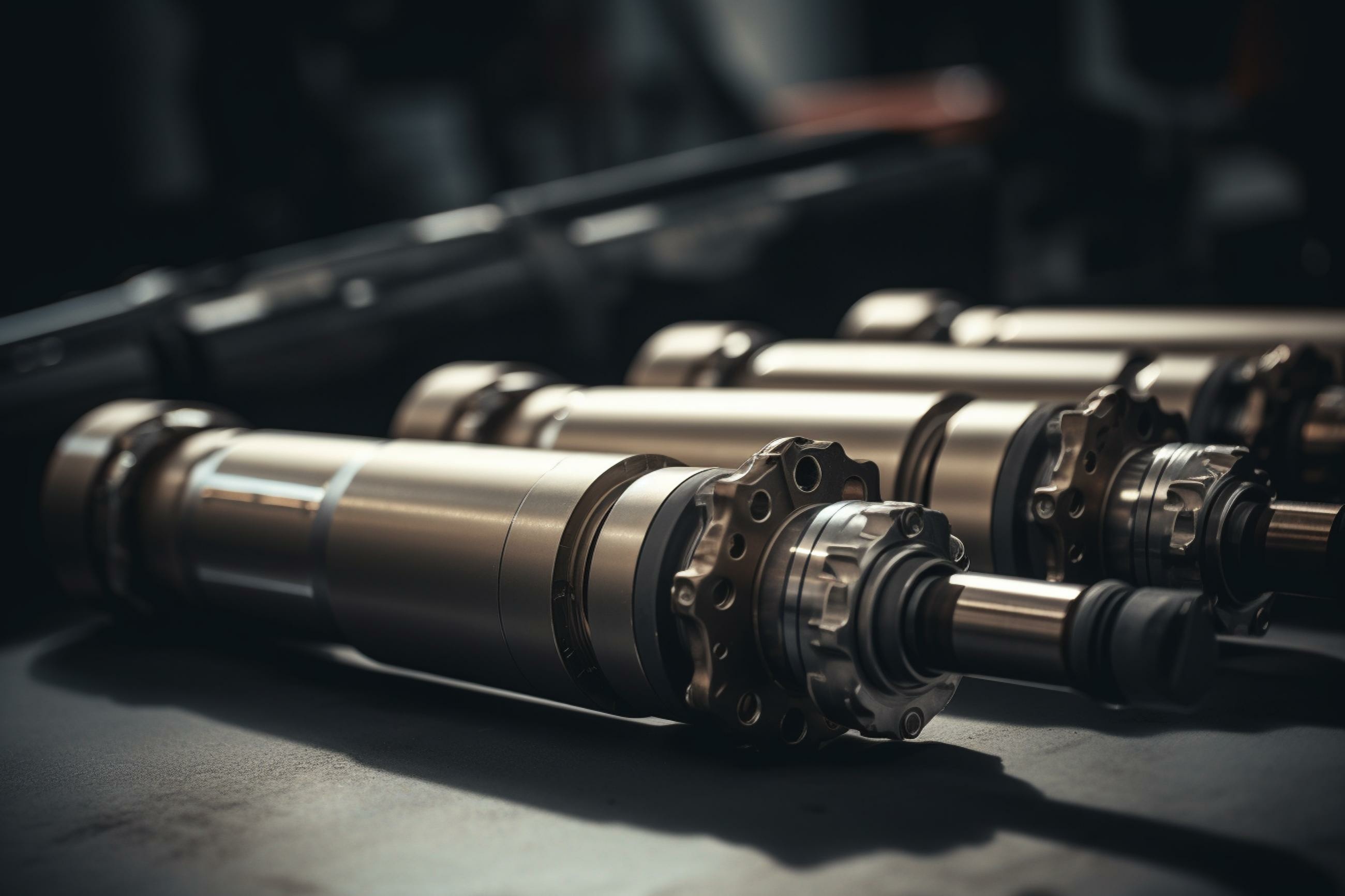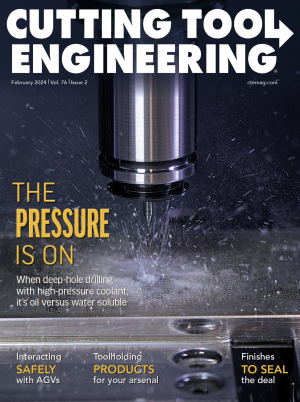Hydraulic cylinders and similar fluid power devices are integral to our lives. We find them on bulldozers, aircraft, automobiles and lawnmowers. Regardless of the application, performance and reliability of the fluid power system is dependent on effective seals.
Experts will tell you that preventing leaks in dynamic hydraulic systems not only requires a good seal it also requires a good sealing surface. For this reason, the surface finish of components that mate with hydraulic seals must have proper surface finish.
Sealing surfaces must have finishes that are fine enough to prevent high pressure oil from passing between the seal and surface of the sealed component but also rough enough to allow proper lubrication. If the surface is too rough or the lay of (directional orientation) the tool marks is incorrect, fluids can pass between seal and component. Conversely, should the surface be too fine, then there is no way to retain lubrication and the seal will be abraded leading to failure.
Static and dynamic sealing surfaces typically have surface finish requirements between 8 μin and 12 μin. Common machining operations like reaming, turning and boring cannot reliably achieve these finish requirements. Therefore, abrasive operations like honing and grinding are the most common machining processes used to finish sealing surfaces.
Many applications like hydraulic cylinder rods are also hardened and have coatings like hard chrome applied to enhance wear resistance. These factors also preclude the use of non-abrasive machining.

The most common finishing process for sealing surfaces is grinding. Component geometry, production volumes and component size are going to dictate the process that is used. Surface finish requirements and material properties will dictate the size, shape and type of abrasive wheel that is selected.
In repair shops, tool rooms or specialty applications when volumes are low a shop most often relies on processes like cylindrical grinding and possibly tool post grinding on a lathe to finish components.
In high volume shops centerless grinding might be the first choice for parts like rods for hydraulic cylinders. Centerless grinding allows the part to flow through the machine from end to end. This through feed process is unique to centerless grinding and is exceptionally fast. Centerless grinding also produces very round parts and very fine finishes.
Other forms of abrasive finishes are often used when the application is critical, and the manufacturer wants some insurance in the manufacturing process. Automotive manufacturers that produce power steering gears will often use super finishing after centerless grinding to improve the finish and breakup the tool marks left from grinding. Super finishing forces solid abrasive stones held in oscillating heads against a part that is rotating. The abrasive action helps eliminate the leak paths that might have been left from grinding and it also removes any blemishes that might have been created during the operations after grinding.
Finishing internal sealing surfaces is more challenging than finishing outside surfaces. Internal grinding is one option and works much the same way OD grinding works. Like OD grinding it is usually reserved for low-volume work. There are reports of people using centerless ID grinding, but, much like Sasquatch, it is talked about yet only few have seen it.
Honing is the predominant finishing process for ID surfaces. Honing not only provides excellent roundness and the optimal surface finish for a sealing surface, it is also exceptionally cost effective in low-volume and high-volume environments. Honing and superfinishing are very similar processes both use abrasive stones to remove small amounts of material to finish the sealing surface. Honing, unlike superfinishing, is done with rotating stones while the part is held stationary.

Honing is also applicable in all volume scenarios. There are inexpensive manual honing machines available for low-volume applications and there are automated and sophisticated honing machines for high-volume manufacturers. There are variations in machine size and part orientation depending on the application. However, there is little difference in the honing tools and the process. In all cases the parts are held stationary, and the rotating stones are stroked axially to achieve the fine finishes required for sealing.
This article, up to this point, has focused on common dynamic sealing surfaces where the designer must balance the need for a fine finish to prevent leak paths and the need for the surface to carry some fluid to prevent abrading the seal. In other situations, the components must be sealed without the use of gaskets and similar components.
Hydraulic pumps and motors for aerospace applications are a good example. Aerospace hydraulic pumps are high-pressure, high-volume units that operate in very harsh conditions. Engineers design them to seal without the use of gaskets, o-rings and similar sealing materials to reduce risk of failure. Creating these mechanical seals requires surface finishes that are mirror like. Flatness requirements of the surface can be 0.000040” or better. When the surfaces are assembled, fluids cannot physically travel between the faces of the components.
Lapping is the only process available to produce surfaces to these requirements. Lapping is done in several ways depending on the part shape, but the basic process is the same. Parts are rotated on or against a relatively soft surface like cast iron while an abrasive slurry is applied. The abrasive materials are extremely fine and the cutting action is slow, and that delivers the mirror finishes that are required.
All sealing surfaces require fine surface finishes and accurate geometries, which is why abrasive processes dominate the finish machining of seal surfaces. Unlike other manufacturing processes, abrasive finishing processes used to create sealing surfaces are common regardless of scale or industry.
Related Glossary Terms
- abrasive
abrasive
Substance used for grinding, honing, lapping, superfinishing and polishing. Examples include garnet, emery, corundum, silicon carbide, cubic boron nitride and diamond in various grit sizes.
- boring
boring
Enlarging a hole that already has been drilled or cored. Generally, it is an operation of truing the previously drilled hole with a single-point, lathe-type tool. Boring is essentially internal turning, in that usually a single-point cutting tool forms the internal shape. Some tools are available with two cutting edges to balance cutting forces.
- centerless grinding
centerless grinding
Grinding operation in which the workpiece rests on a knife-edge support, rotates through contact with a regulating or feed wheel and is ground by a grinding wheel. This method allows grinding long, thin parts without steady rests; also lessens taper problems. Opposite of cylindrical grinding. See cylindrical grinding; grinding.
- cylindrical grinding
cylindrical grinding
Grinding operation in which the workpiece is rotated around a fixed axis while the grinding wheel is fed into the outside surface in controlled relation to the axis of rotation. The workpiece is usually cylindrical, but it may be tapered or curvilinear in profile. See centerless grinding; grinding.
- feed
feed
Rate of change of position of the tool as a whole, relative to the workpiece while cutting.
- grinding
grinding
Machining operation in which material is removed from the workpiece by a powered abrasive wheel, stone, belt, paste, sheet, compound, slurry, etc. Takes various forms: surface grinding (creates flat and/or squared surfaces); cylindrical grinding (for external cylindrical and tapered shapes, fillets, undercuts, etc.); centerless grinding; chamfering; thread and form grinding; tool and cutter grinding; offhand grinding; lapping and polishing (grinding with extremely fine grits to create ultrasmooth surfaces); honing; and disc grinding.
- inner diameter ( ID)
inner diameter ( ID)
Dimension that defines the inside diameter of a cavity or hole. See OD, outer diameter.
- lapping
lapping
Finishing operation in which a loose, fine-grain abrasive in a liquid medium abrades material. Extremely accurate process that corrects minor shape imperfections, refines surface finishes and produces a close fit between mating surfaces.
- lathe
lathe
Turning machine capable of sawing, milling, grinding, gear-cutting, drilling, reaming, boring, threading, facing, chamfering, grooving, knurling, spinning, parting, necking, taper-cutting, and cam- and eccentric-cutting, as well as step- and straight-turning. Comes in a variety of forms, ranging from manual to semiautomatic to fully automatic, with major types being engine lathes, turning and contouring lathes, turret lathes and numerical-control lathes. The engine lathe consists of a headstock and spindle, tailstock, bed, carriage (complete with apron) and cross slides. Features include gear- (speed) and feed-selector levers, toolpost, compound rest, lead screw and reversing lead screw, threading dial and rapid-traverse lever. Special lathe types include through-the-spindle, camshaft and crankshaft, brake drum and rotor, spinning and gun-barrel machines. Toolroom and bench lathes are used for precision work; the former for tool-and-die work and similar tasks, the latter for small workpieces (instruments, watches), normally without a power feed. Models are typically designated according to their “swing,” or the largest-diameter workpiece that can be rotated; bed length, or the distance between centers; and horsepower generated. See turning machine.
- outer diameter ( OD)
outer diameter ( OD)
Dimension that defines the exterior diameter of a cylindrical or round part. See ID, inner diameter.
- part orientation
part orientation
Designing the assembly machine, feeding mechanism and the part itself so the parts to be assembled are properly aligned prior to and during the assembly operation.
- turning
turning
Workpiece is held in a chuck, mounted on a face plate or secured between centers and rotated while a cutting tool, normally a single-point tool, is fed into it along its periphery or across its end or face. Takes the form of straight turning (cutting along the periphery of the workpiece); taper turning (creating a taper); step turning (turning different-size diameters on the same work); chamfering (beveling an edge or shoulder); facing (cutting on an end); turning threads (usually external but can be internal); roughing (high-volume metal removal); and finishing (final light cuts). Performed on lathes, turning centers, chucking machines, automatic screw machines and similar machines.
- wear resistance
wear resistance
Ability of the tool to withstand stresses that cause it to wear during cutting; an attribute linked to alloy composition, base material, thermal conditions, type of tooling and operation and other variables.


